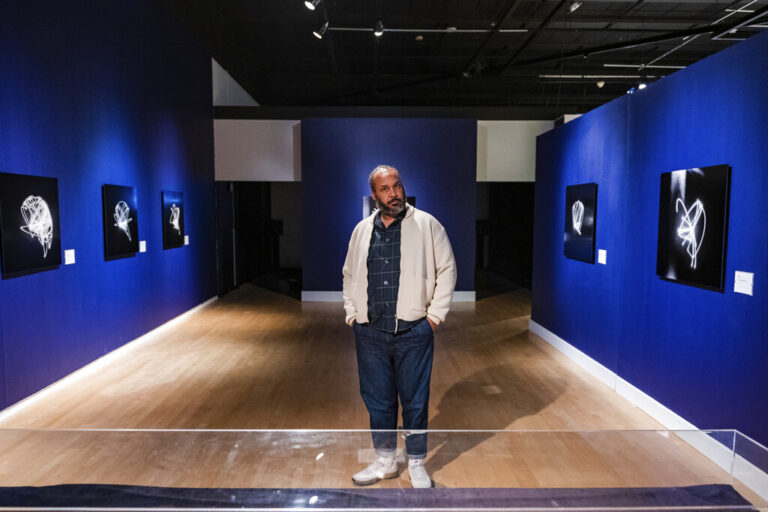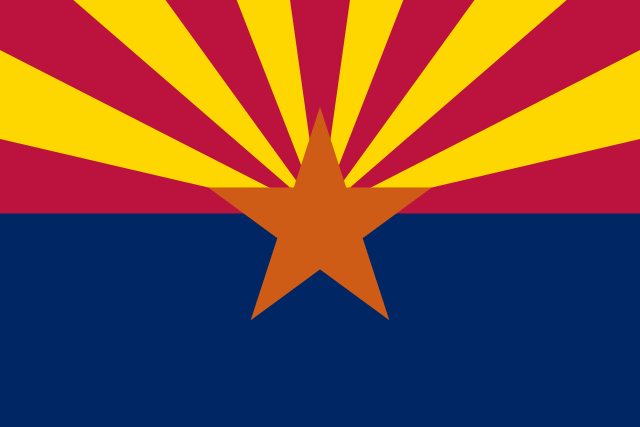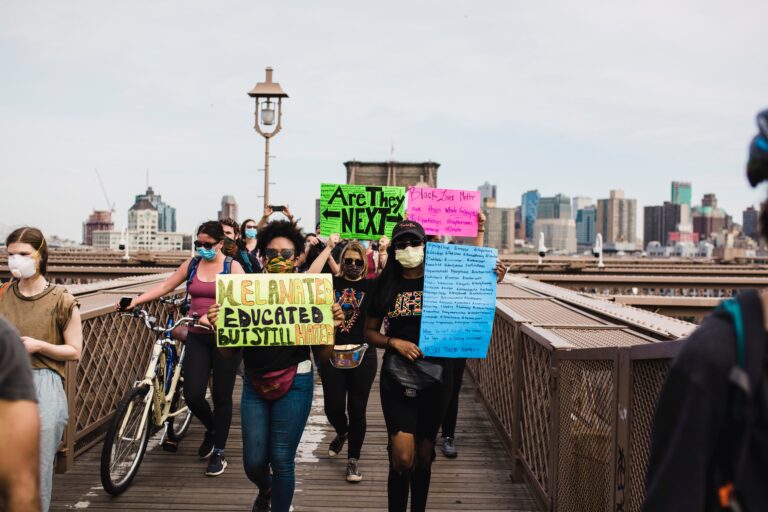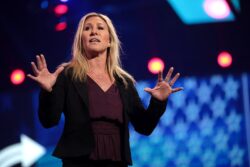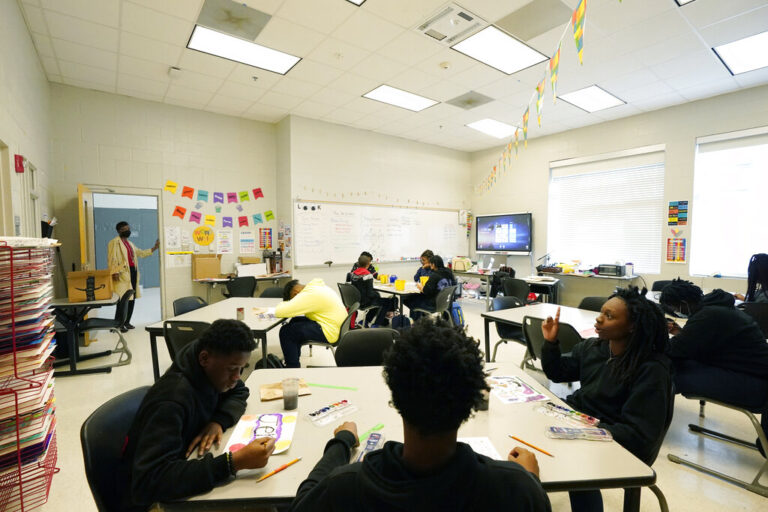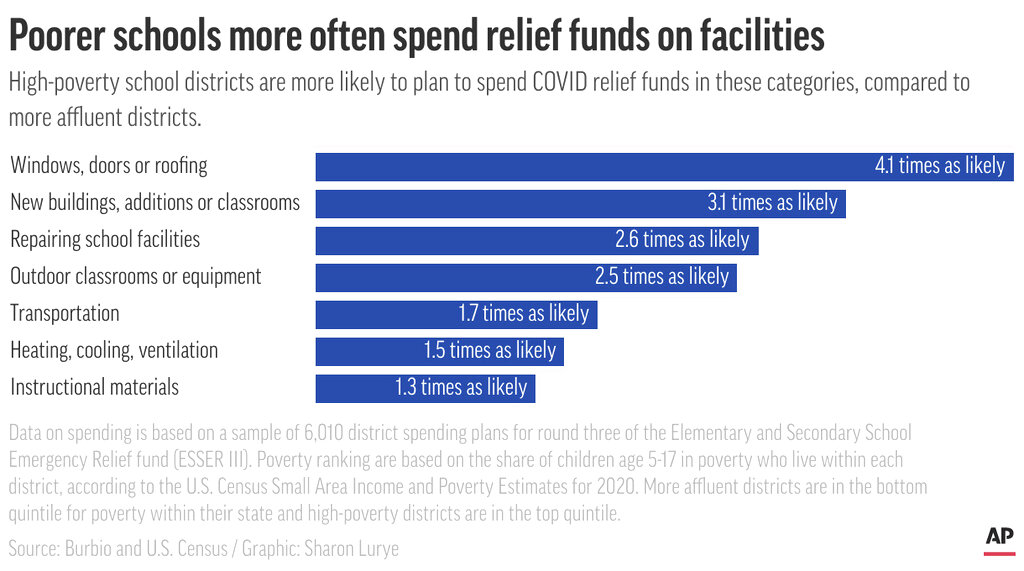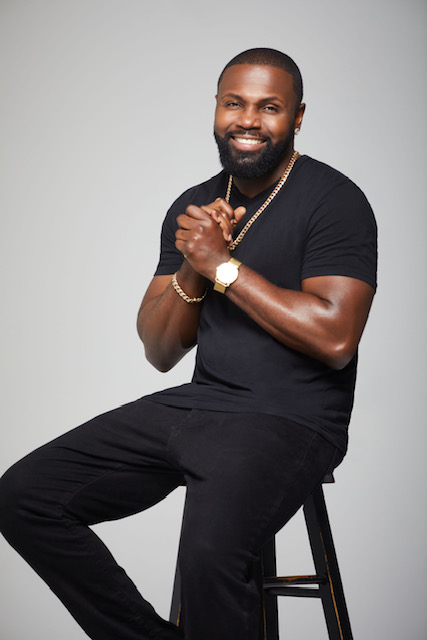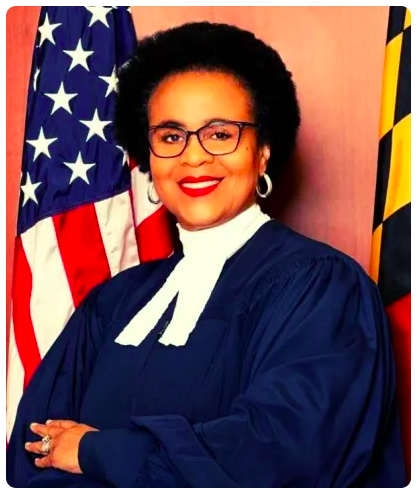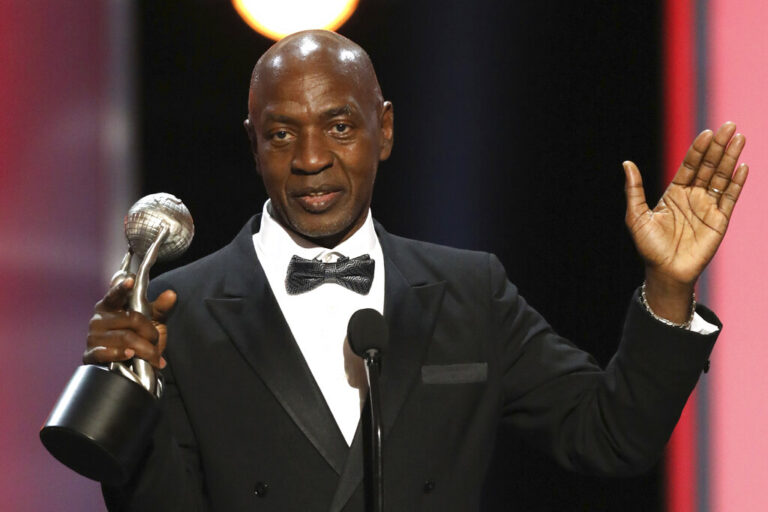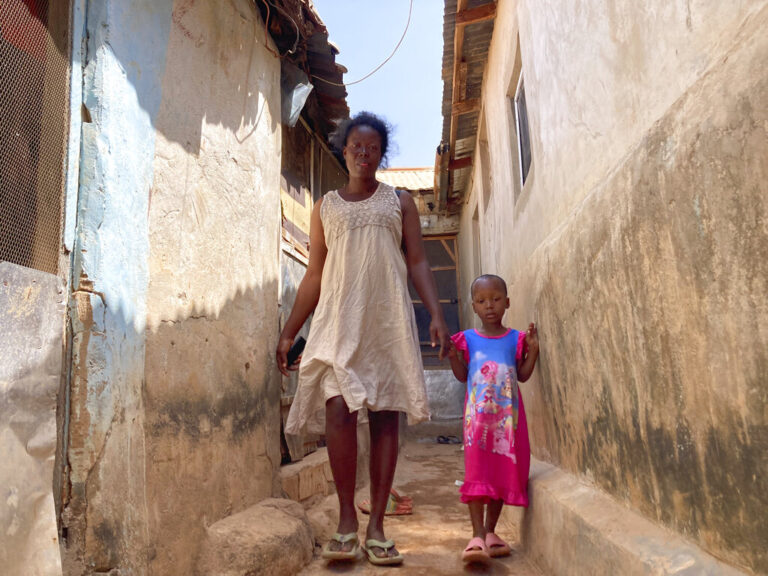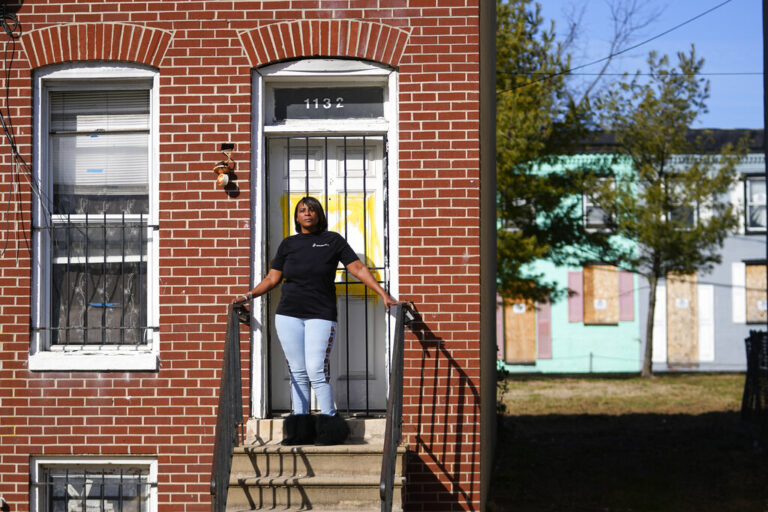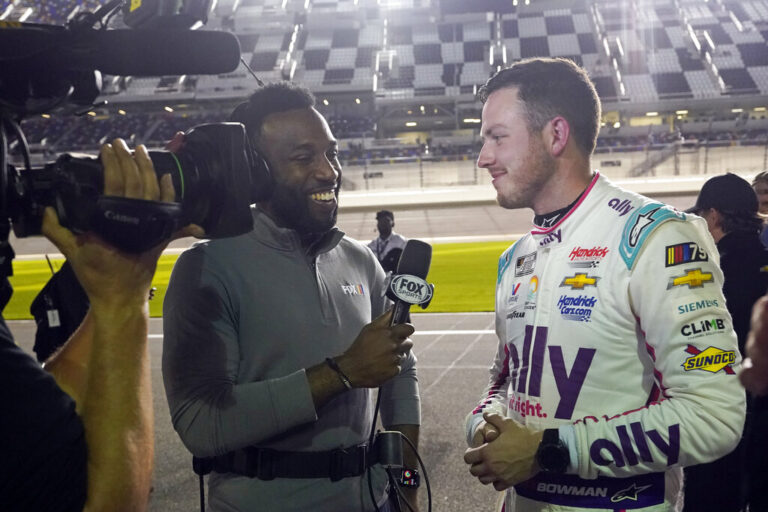By LAWRENCE BURNEY, The Baltimore Banner
BALTIMORE (AP) _ When you step into the gallery at University of Maryland, Baltimore County’s Fine Arts Building, one of the first things you see is a large multicolored graph on the wall. On it are the names of world-class rappers such as Jay-Z, 50 Cent and Lupe Fiasco in company with visual artists who’ve accomplished immortality through their work: Pablo Picasso, Jean-Michel Basquiat, Rembrandt. Circular nodes surround the names with lines connecting them to other familiar figures such as Ja Rule, J. Cole, Andy Warhol, Vincent van Gogh and A$AP Rocky, whose names are also incapsulated in circles of different colors. The network graph shows the relationships between rappers and the painters they’ve name-dropped in their music, the larger nodes indicating who’s been mentioned the most throughout hip-hop history.
The mentions “could be for a number of reasons,” said Tahir Hemphill _ whose “Picasso, Baby!” piece is part of a larger exhibition called Rap Research Lab _ as he gives me a tour through the space. “It could be because people like Pablo Picasso, or it could be a shorthand for mastery and wealth. But also in terms of alliteration and rhyme, it’s kind of easy to rhyme. I mean, ‘I’m trying to cop those colossal-sized Picassos’ _ it’s easier to rhyme compared to other artist’s names.”
Hemphill, 50, whose work is at the intersection of technology, art and research _ often through the lens of hip-hop culture _ is at the tail end of a two-year fellowship in UMBC’s Department of Visual Arts. Rap Research Lab, which opened recently, is an ever-evolving culmination of his 16-year commitment to making interactive art from his interpretations of information. Along with collaborators, he develops systems that produce invaluable data about rap lyrics.
“Picasso, Baby!” was created in 2014 and named after a Jay-Z song that came out the year before, in which the rapper relishes in the luxurious aspects of his life _ most notably, owning art from the likes of Jeff Koons, Mark Rothko, Picasso and others. It marked a significant shift in hip-hop in which rappers started to look at expensive art as a way to flex their wealth or taste, in addition to the old reliables like jewelry and cars.
“I already started the update and the original list for painters (mentioned in rap songs) was maybe like 50 or 60 in 2014,” Hemphill says. “And the new list of painters is like 200.” The beauty of Rap Research Lab is that, as time goes on, the art will inevitably change shape as more data comes in.
Elsewhere in the show is “Maximum Distance, Minimum Displacement,” displaying 3-D renderings of where rappers travel in their work. During a residency at Carnegie Mellon University in 2017, Hemphill and six others used lyrics from rappers like Missy Elliott, Drake and Nas to track the locations (cities, neighborhoods, their favorite food joints) mentioned in their songs. From there, the team found the coordinates of said locations and developed spherical graphs to add dimension.
“At Carnegie Mellon University, they gave me a tour of the digital fabrication line. So they had laser cutters, they had large-format printers, they had CNC routers. And we were walking down this hallway and it was a glass wall and I looked and I saw this 15-foot robot, industrial robot, was just sitting there,” he remembers with a smile. “And I’m like, `Yo, what’s up with this?’ They said, `Oh, that’s our robot arm,’ and I was like, I don’t know what I’m going to do with it but I’m not leaving here without touching it.”
Hemphill and team developed a light stylus for the robot arm and programmed it to trace coordinates of the rappers’ favorite places to create figures. Analog photos and video documentation of the process are also on view at the show.
Other works in Rap Research Lab include footage from an internet-sourced 1990 interview of rising New York rappers in which Hemphill takes note of the shoutouts each artist gives when they come up to the mic. There’s an encased vinyl collection of albums that served as inspiration while Hemphill put the show together. And there’s his oldest project, 2007’s rap score cards, which took selected tracks and gave them grades based on the depth of the rapper’s vocabulary and suggested what level of education a person needed to fully comprehend what the song was about.
Rap Research Lab’s power is that it provides a plethora of entry points for those interested in looking at hip-hop through data analysis, and the pieces encourage you to think about how your own favorite music would physically manifest. And you don’t just have to come to the show at UMBC to get those tools (even though you should still pay a visit).
Rap Almanac is an online database that Hemphill has been fine-tuning for over a decade. It’s the easiest way to look for lyrics out of particular regions and in different languages. And unlike what can be seen at UMBC, the website is up to date with new music.
“When I did those (rap score) cards, I was like, `This is a cool little project. I’ll do a poster. I’ll do some cards. I’ll move on to the next thing.’ And that hasn’t happened,” Hemphill said of the research lab’s continued growth. “So part of this project is to bring people together to have those conversations.”

